
Tudor VS Rolex: Which is Best?
Tudor and Rolex have a long relationship that goes back many decades. Despite this, not a lot of people know the background of the relationship and what it’s all about. The most natural question that people ask about these two brands is – Tudor VS Rolex – which is best?
We have already written a complete article on the relationship between Tudor and Rolex here, however, let’s just briefly summarize the relationship like this:
Tudor was founded by Hans Wilsdorf, the same man who founded Rolex, in 1926. Upon founding Tudor, he said ”For some years now I have been considering the idea of making a watch that our agents could sell at a more modest price than our Rolex watches, and yet one that could attain the standards of dependability for which Rolex is famous, I decided to form a separate company, with the object of making and marketing this new watch. It is called the Tudor Watch Company.”
With that said, Tudor was established as a budget brand of Rolex but meant to produce the same or similar quality.
So what are the differences and similarities between Tudor and Rolex? Let’s find out….
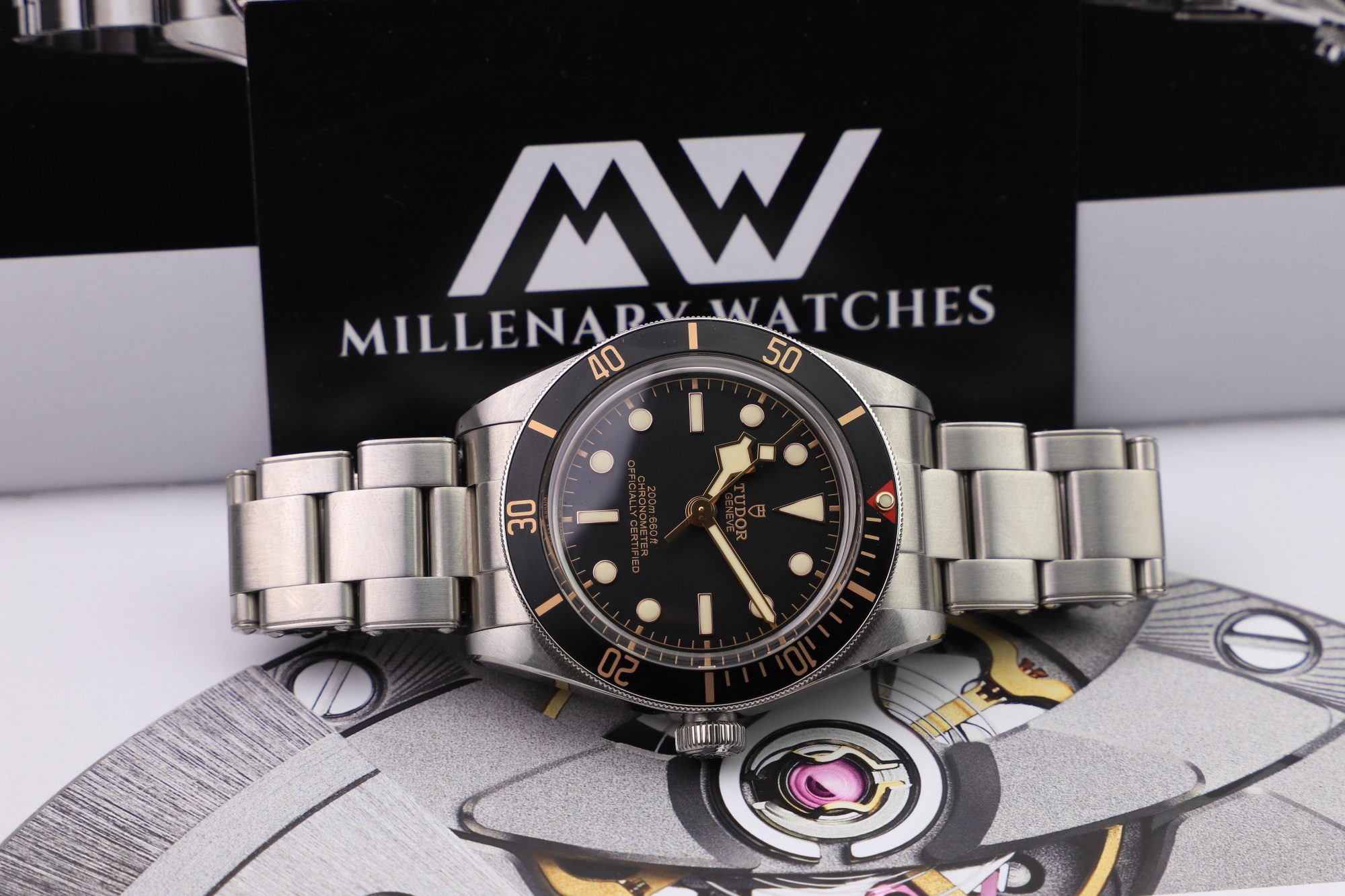
Tudor VS Rolex: Differences and similarities
Tudor has long been called, by many, the poor man’s Rolex. But if you read our article about this topic, you will find out that it is simply not true.
However, naturally, since Tudor was established as a budget brand of Rolex, then you can expect a lower quality, but at a lower price point. With that said, whilst the Tudor, for obvious reasons provides, holds a lower quality compared to Rolex, it can still offer the same bang for the buck, seeing that the watches cost much less. In that sense, it is not completely fair to compare the quality of Tudor VS Rolex, because after all, they are not meant to compete with each other, neither in terms of quality or in price.
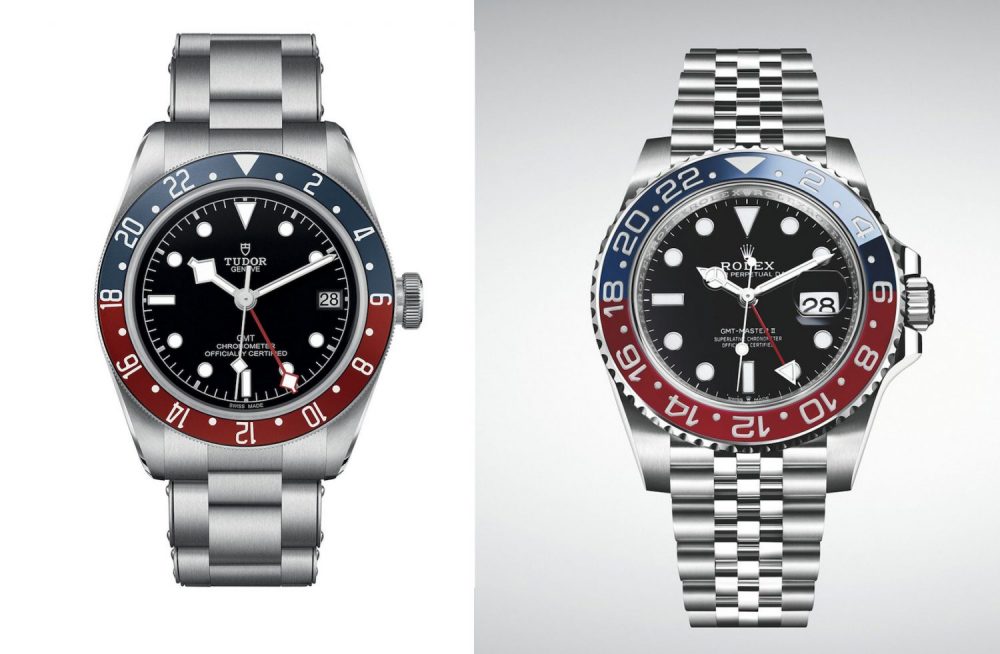
Style and design
Let’s start by comparing the style and design of Rolex and Tudor. The fact of the matter is that Tudor and Rolex shared much more similarities back in the day, compared to now.
Remember that Tudor was made from Rolex parts, but fitted with off-the-shelf movements, and this means that vintage Tudor watches are extremely similar in design to Rolex watches.
However, today, that has changed, as Tudor has more and more gone in its own direction in an attempt to differentiate itself from Rolex.
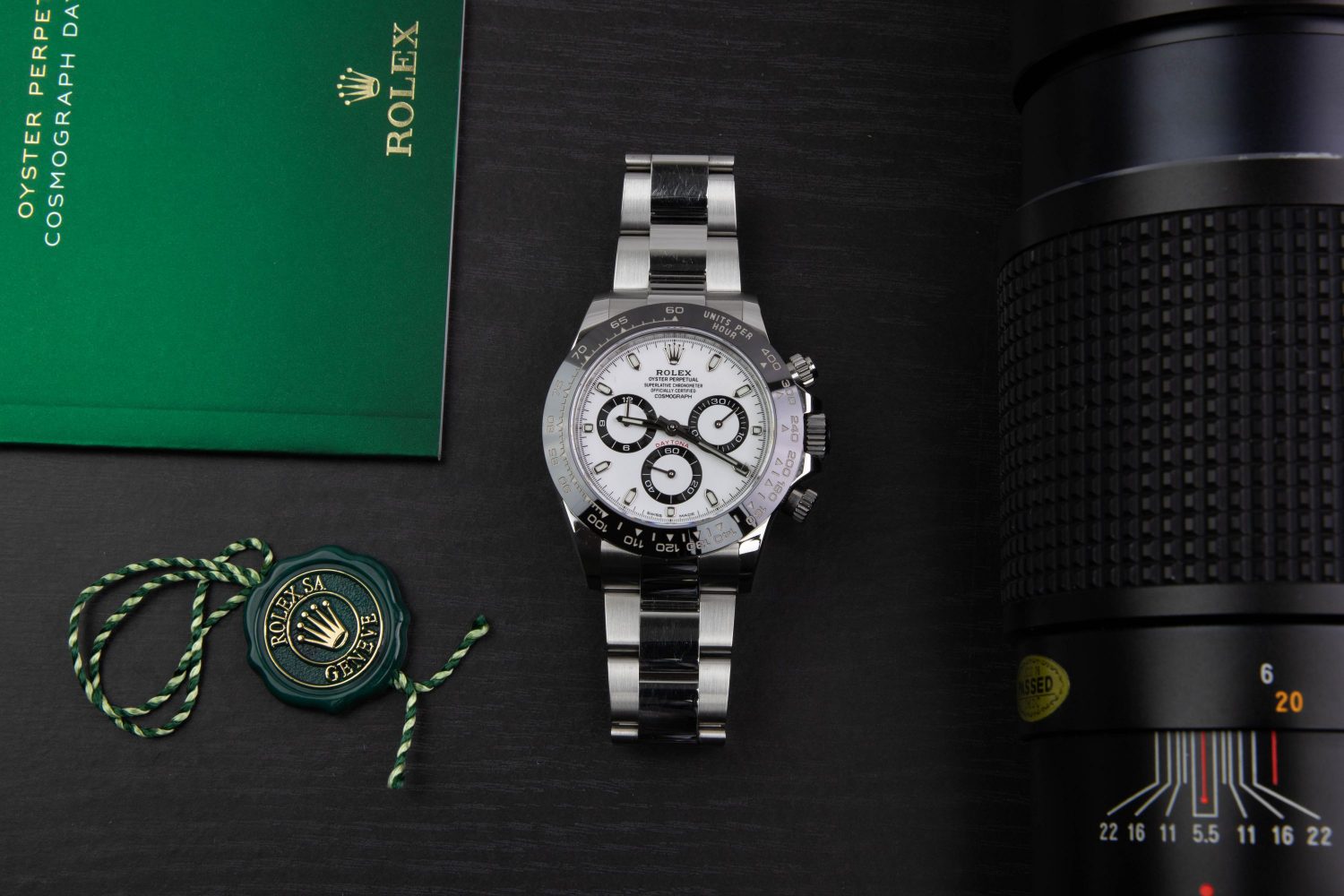
Today, Tudor has its own designs but seeing that Tudor takes a lot of inspiration from its heritage for many of its models, it still carries similar design elements and traits that you can recognize from Rolex watches.
You can still see similarities between Tudor and Rolex watches, but it is more so that, since Tudor takes inspiration from its heritage, you notice similarities primarily between Rolex’s vintage watches and Tudor’s modern watches. Whilst similarities between the modern Rolex and Tudor watches obviously can be easily identified, they are much clearer if you look back at Rolex’s vintage watches.
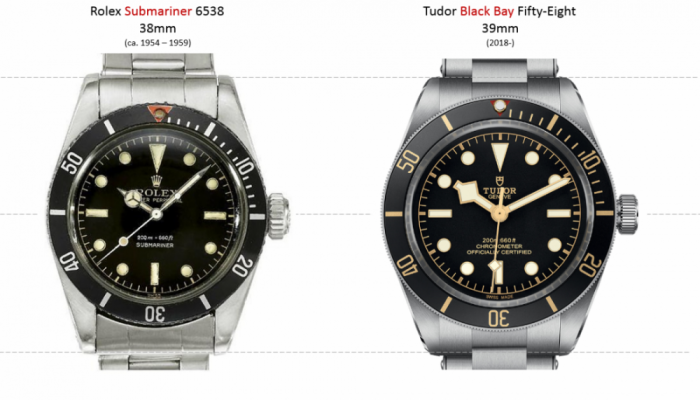
However, something that is very clear is that Tudor is a bit of Rolex’s guinea pig, which tests the market by daring to try new things and experiment with different designs. Rolex, on the other hand, is far more conservative, and does not dare to risk its reputation and heritage by releasing bold and daring new designs.
This is partly why Tudor’s slogan is ”Born to dare”.
The good thing about Rolex being able to use Tudor as a guinea pig is that they are able to test the market with Tudor. If something is well-received, Rolex may be able to implement it into its own watches further on.
Tudor VS Rolex: Prices
Now, the main reason why it is difficult to compare Tudor and Rolex is the fact that they are priced completely differently. In fact, they go after two completely different markets. Rolex is meant to be the luxury and prestige alternative, whereas Tudor is meant to speak to a more entry-level audience
The cheapest modern Tudor watch has a retail price of around 2000 USD, however, the cheapest Rolex watch is the lady Oyster Perpetual, which is still priced at more than 5000. With that said, Tudor watches are priced at less than half the price of Rolex watches. For example, a Tudor GMT is priced at about 4000 USD, but a Rolex GMT is priced at about 9500 USD.
As such, you shouldn’t expect the two watches to offer the same quality or finish.
Some might say that the goal with Tudor is to catch customers into the Wilsdorf net, and when they are ready to step up from Tudor, then naturally they will look at Rolex.
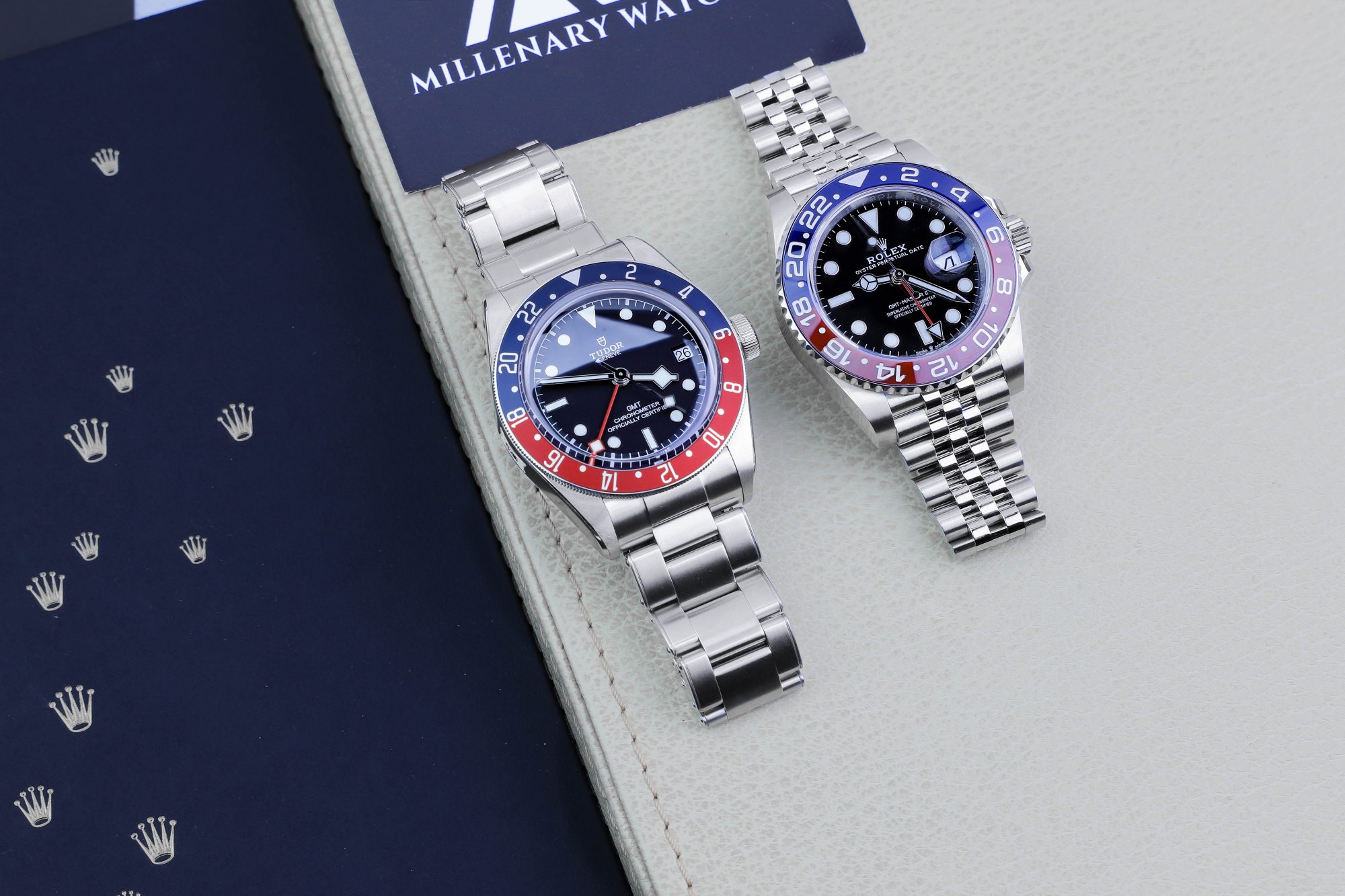
There are many reasons why Rolex is much more expensive than Rolex. First off, Tudor has always been meant to be a budget/affordable brand to Rolex. Whilst, generally speaking, Tudor watches are not affordable, factoring in what they offer, in comparison to their competitors, Tudor watches offer great value for money. For luxury objects, the prices partly tend to increase solely for the purpose of enhancing their sense of luxury, and this is a route that Rolex focuses more on. Tudor, however, focuses on offering high-quality timepieces with a high finish that is superior to its competitors at the same price point.
Rolex VS Tudor: Materials used
Tudor and Rolex use similar materials for their watches (for obvious reasons), however, since Rolex watches are significantly more expensive, Rolex does use more superior materials.
To start with, Rolex uses 904L stainless steel as opposed to Tudor which uses the standard 316L stainless steel. Furthermore, when it comes to Tudor’s gold and steel watches, many of the parts of these watches which appear to be made in gold are not made in full gold.
In 2021, Tudor released its first full gold watch, the Black Bay Fifty-Eight 79018v. When we originally wrote this article in 2020, Tudor had no solid gold watch in its lineup. The released of a solid gold Tudor was a conscious decision to elevate the Tudor brand to make it more luxurious and exclusive – to bring it into a higher segment of luxury watches.
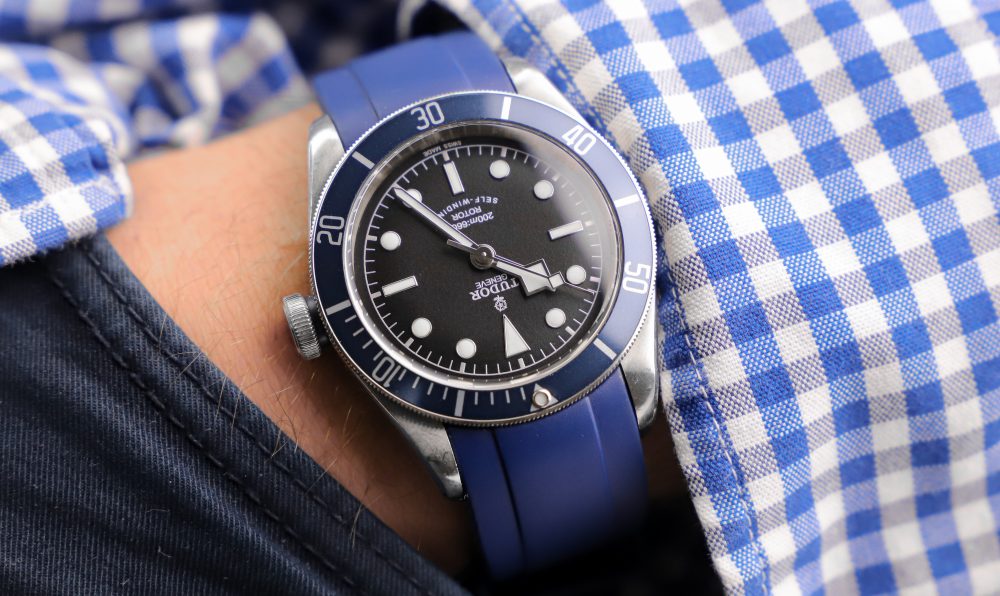
But with the exception of the solid gold Tudor 58, Tudor’s other gold watches are gold-plated (more correctly, gold-capped with a thick layer of gold). Rolex watches, on the other hand, only make gold elements in solid gold. The obvious reason for this is that if Tudor would have made the elements such as the bracelet in solid gold, the watches would have cost so much that they would be priced higher than what most of its target audience is willing to pay for a Tudor watch. With Tudor’s release of its first gold watch, they were likely testing the waters to see if their audience would approve of a Tudor watch with a price that high.
Furthermore, when it comes to materials, Tudor mainly turns to standard materials. Rolex, however, develops its own materials and alloys. In fact, Rolex even has its own foundry. For example, for the rose gold that Rolex uses, they have developed their own Everest gold. Seeing that Tudor does not make any solid gold watches, it just doesn’t make sense for Tudor to develop its own alloys.
Furthermore, as mentioned earlier, Tudor dares to experiment much more than Rolex dares to. This also means that Tudor experiments with new materials for its watches, whilst Rolex sticks to what is tried and true. For example, Tudor has released a number of PVD watches, uses a lot of fabric scraps, and has released watches in bronze and titanium. This is something that few people would ever expect from Rolex.
Tudor VS Rolex: Movement used
Previously, the way Tudor and Rolex were differentiated was: Tudor uses ETA movements but Rolex uses only in-house movements.
However, that description I no longer completely true, which has made it a bit more complicated to describe them.
Today, Tudor has released a number of in-house movements, which they use in a large part of their range of watches. And this is also the direction that Tudor is going in, as they release more and more in-house calibers. Of course, the good news is that Tudor is backed by Rolex’s expertise and knowledge when it comes to developing in-house movements, which gives them an edge over its competitors. After all, most manufacturers in the same price range as Tudor do not use in-house calibers. The fact that Tudor offers in-house movements in many of its watches at the price point they do makes Tudor’s watches great value for money.
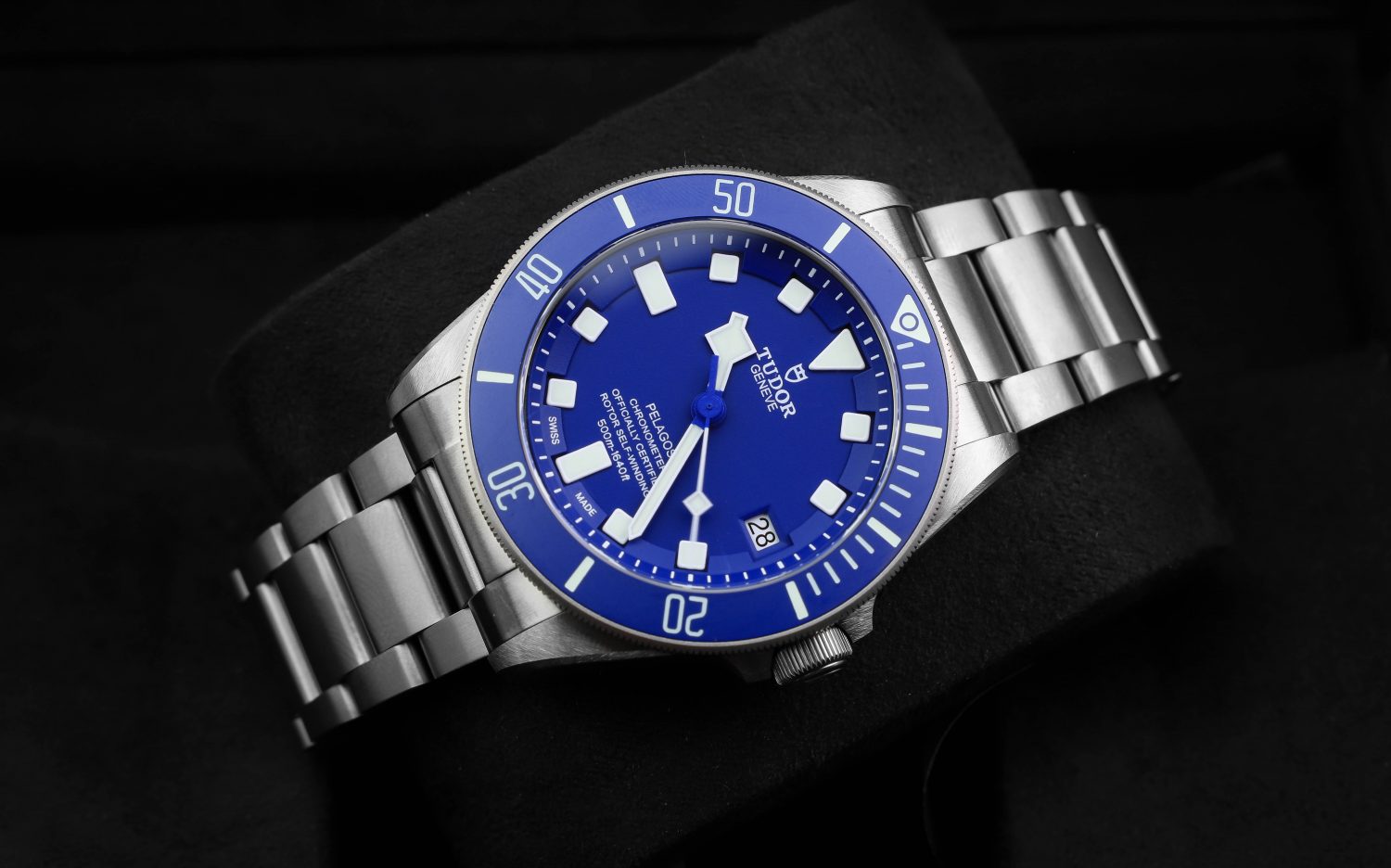
Rolex, as mentioned only uses in-house movements, and has done so since a long time back. At the price point of Rolex, that’s what you expect.
However, Tudor still uses off-the-shelf movements for many of its watches, and this takes away a bit of the great value proposition and prestige of developing and using your own movements. At the same time, using externally sourced movements is not necessarily a bad thing, as they are tried and true, reliable, and can be serviced by a lot of watchmakers.
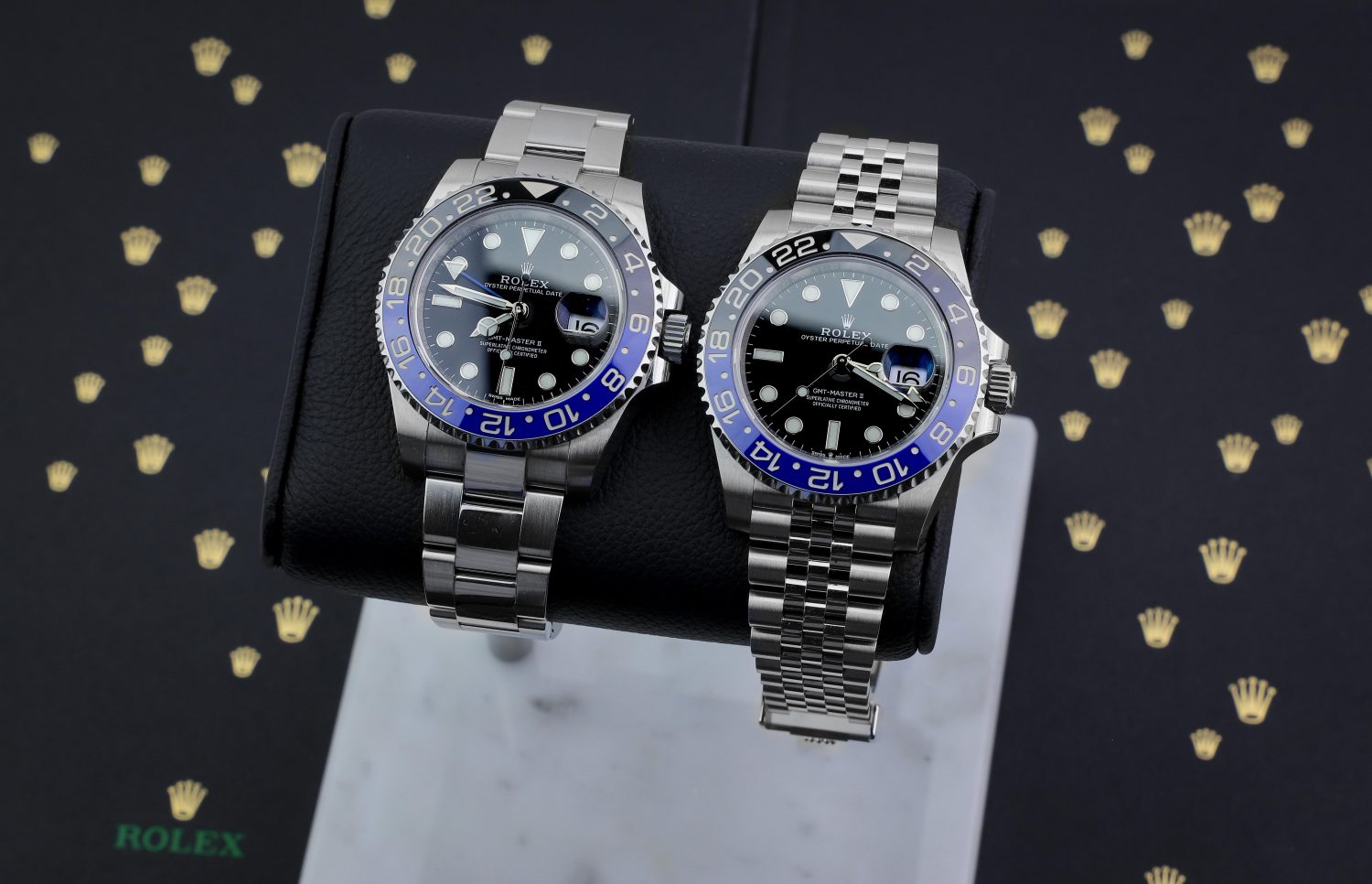
Tudor VS Rolex – which is best?
There are several ways to answer this question. The most obvious answer is that Rolex watches have a far higher quality and finish than Tudor watches. However, if you factor price into the equation, it becomes a completely different story, and the answer all of a sudden does not become as obvious.
Both Tudor and Rolex make great watches and have many decades of expertise in watchmaking. But comparing the two brands is not perfectly fair, as they focus on completely different target audiences.
One thing is for sure: Tudor watches equipped with in-house movements offer great value for money. In a way, Tudor has become what Rolex was many decades ago: a tool watch manufacturer which makes robust and sporty timepieces, not meant to be flashy or in any way status symbols. They are simply meant to be good-looking timepieces that are reliable, well-finished, and robust.
Rolex watches, on the other hand, have moved away a bit from what they used to be: sporty tool watches built for a purpose, to now predominantly focus on luxury and elegance.





$5000 IN 2020 to buy a used Rolex or new Tudor ??? In 10 yrs the valued of 2 above watch is differ in value ? How much ?????